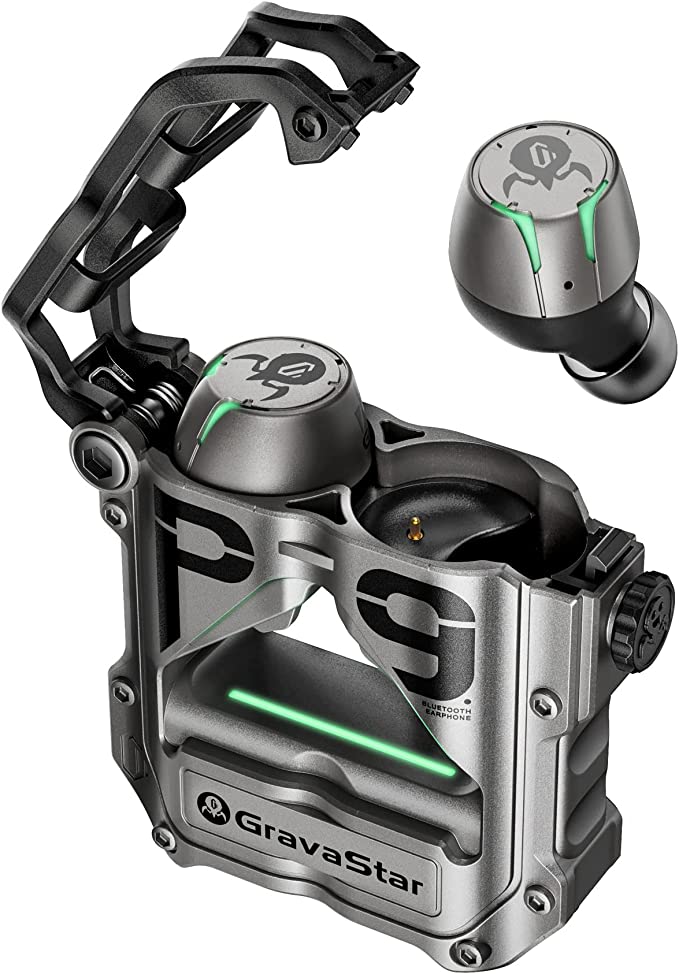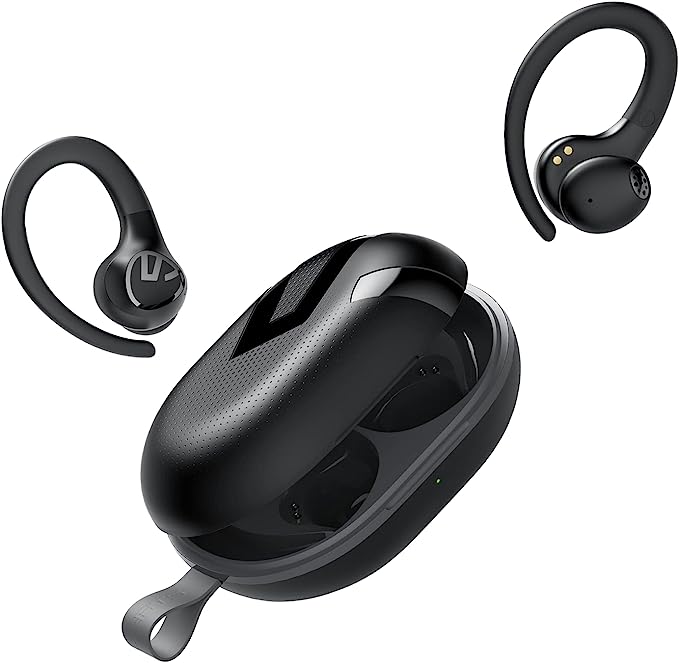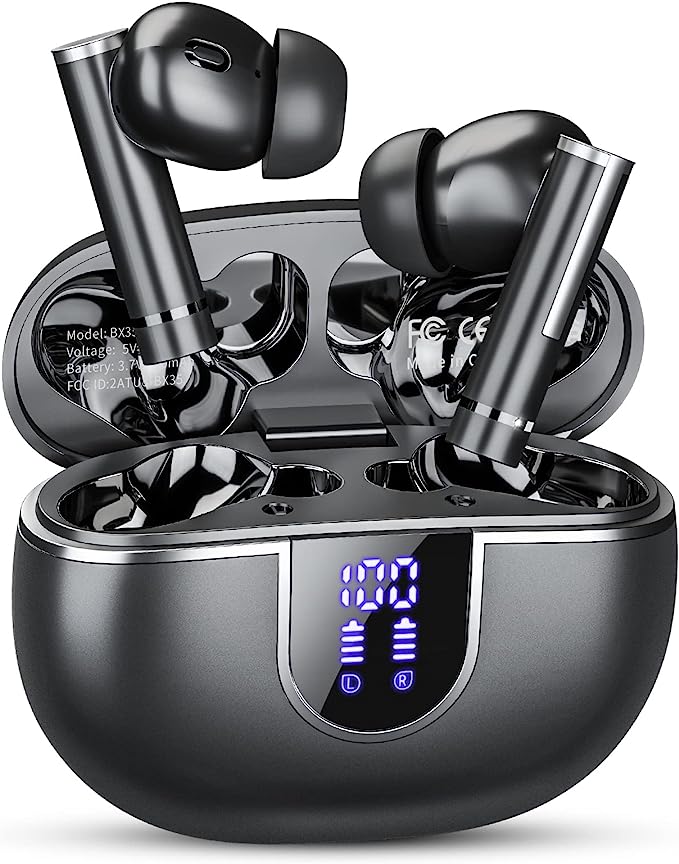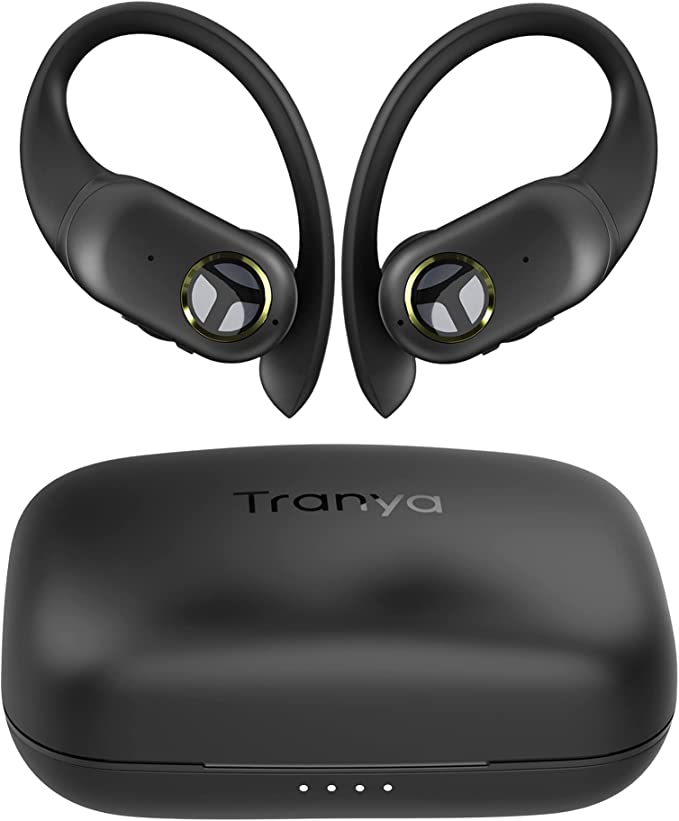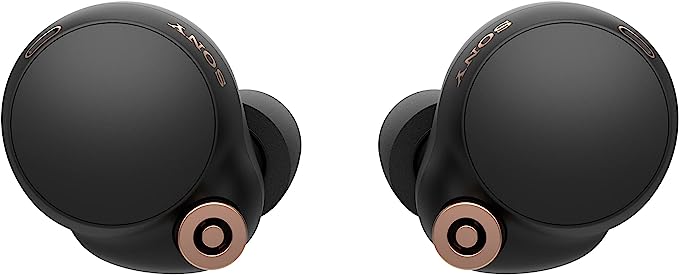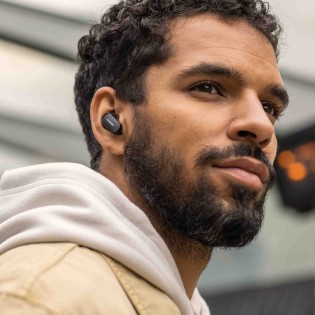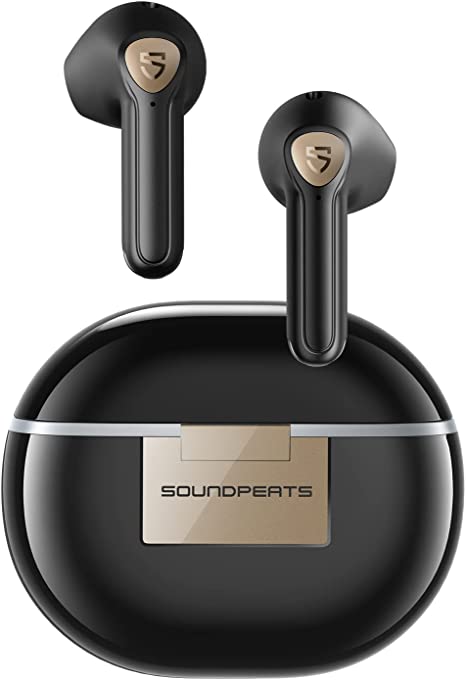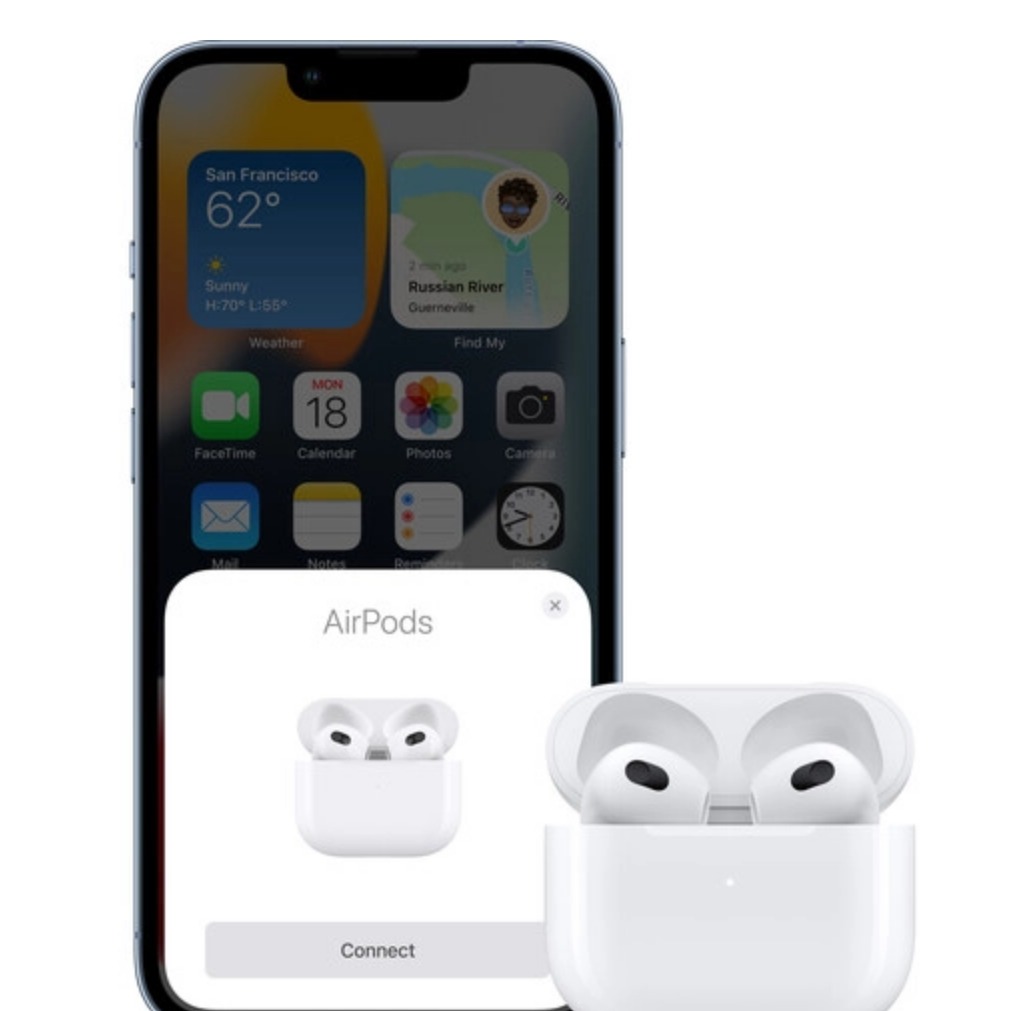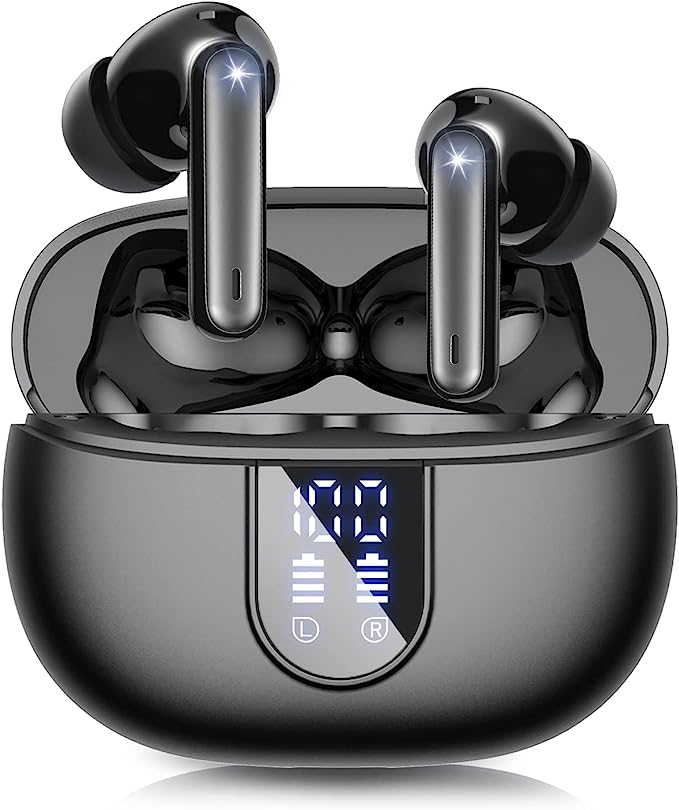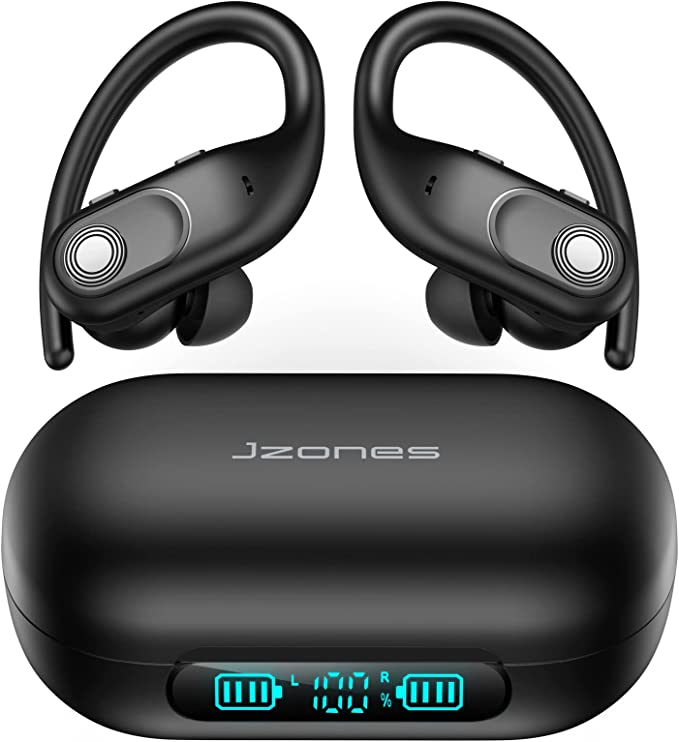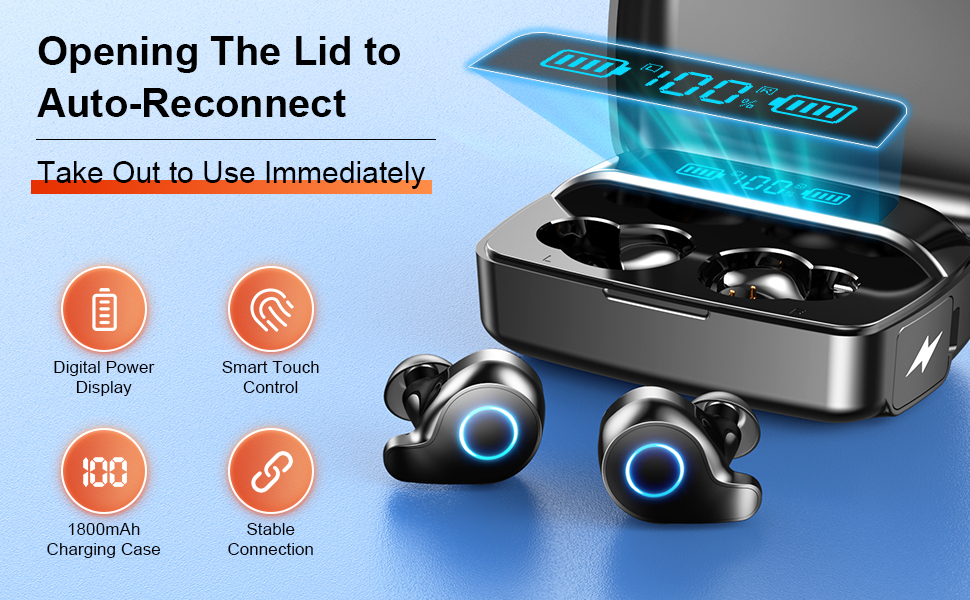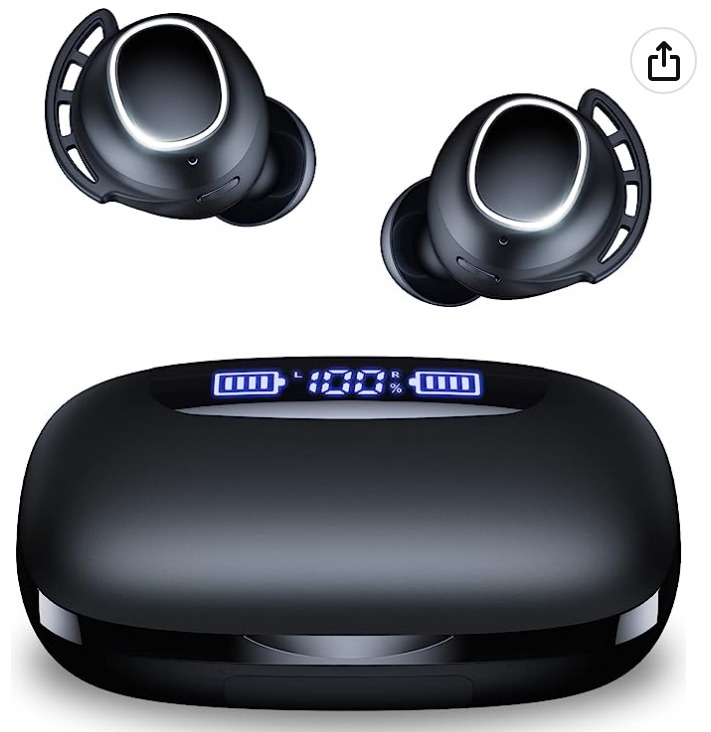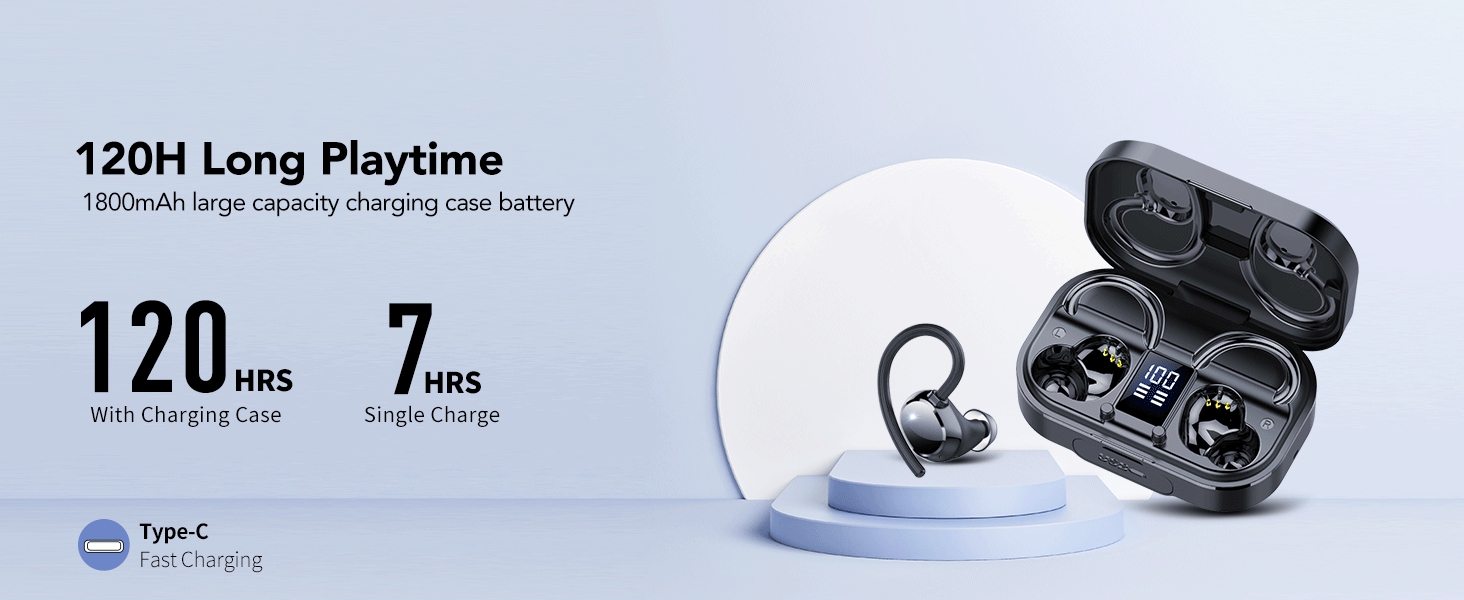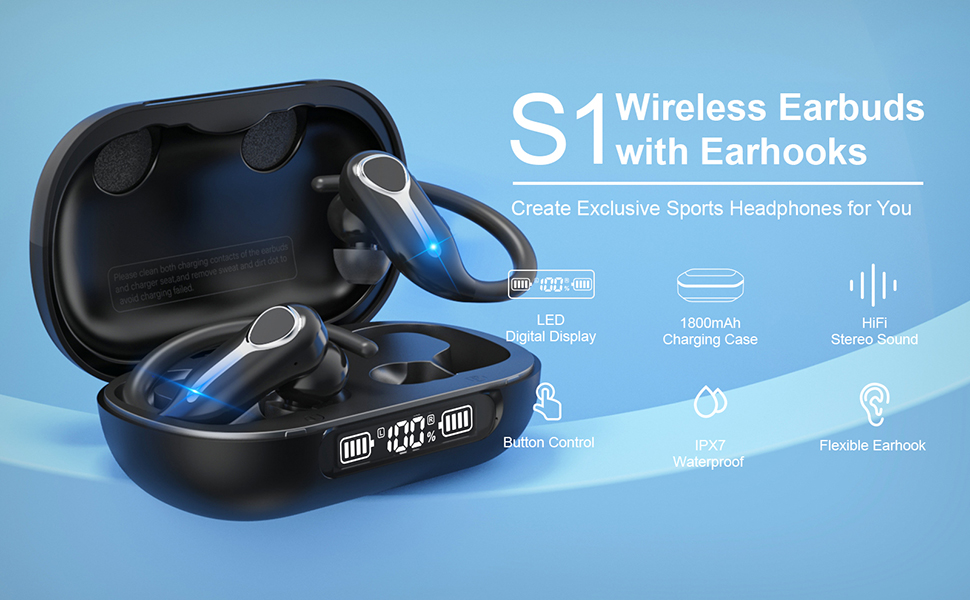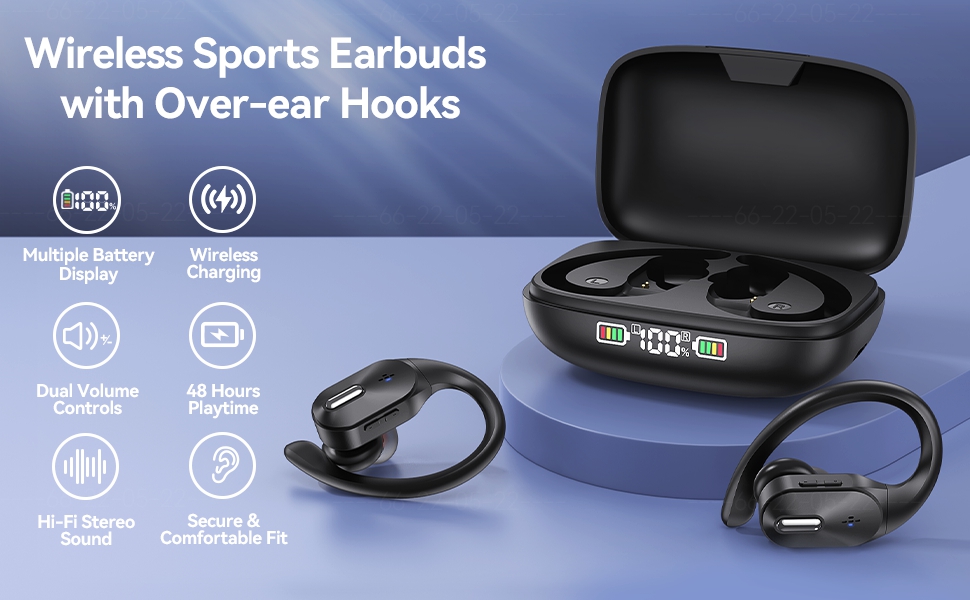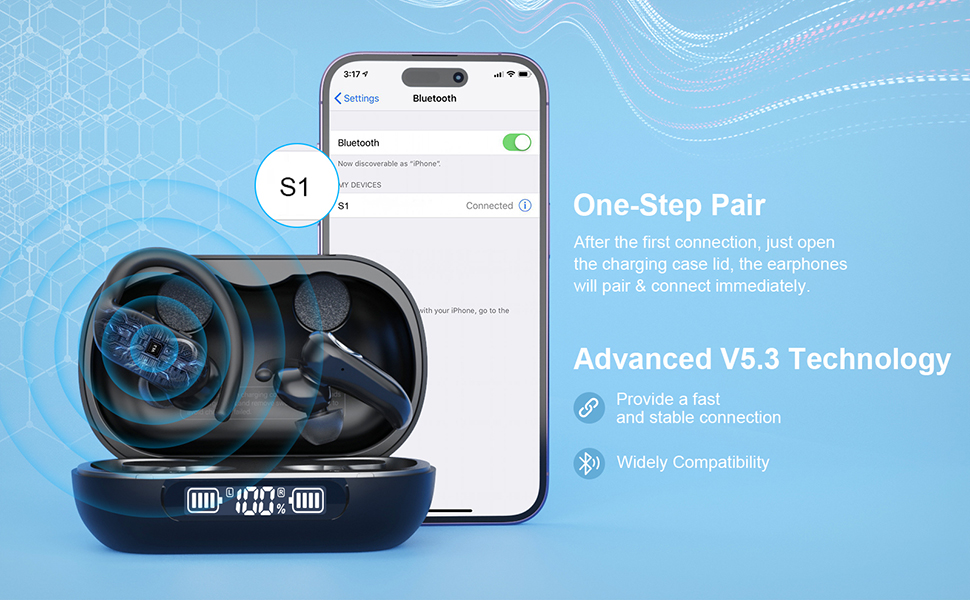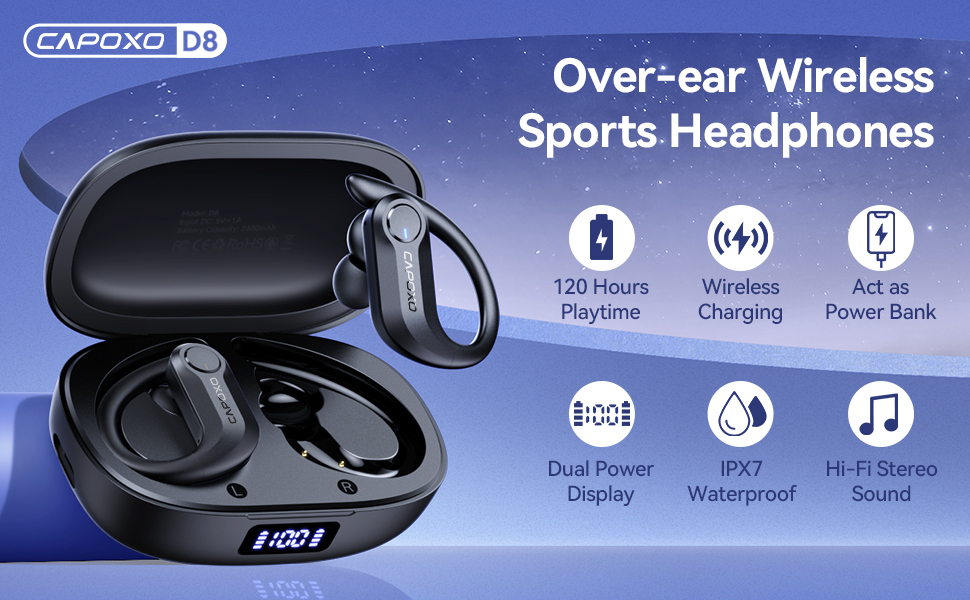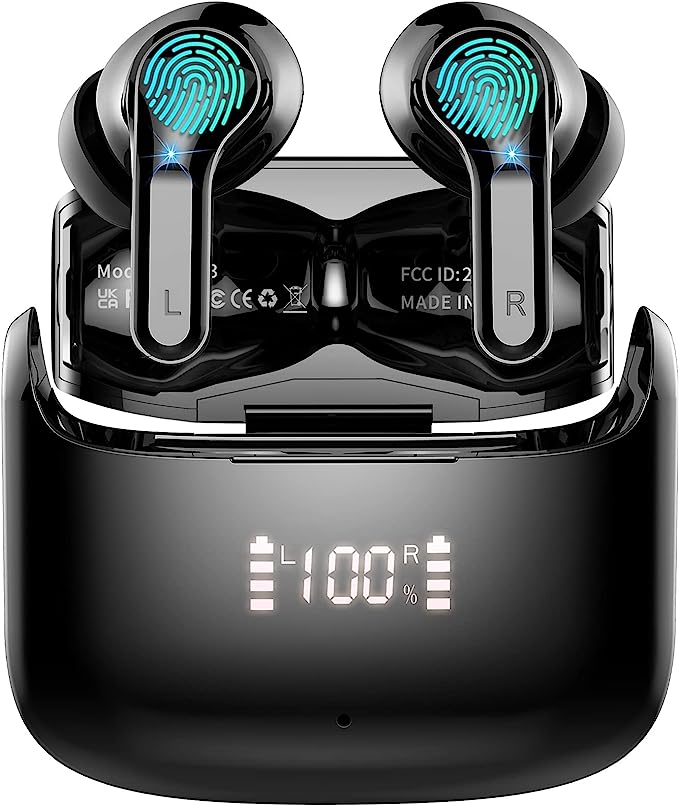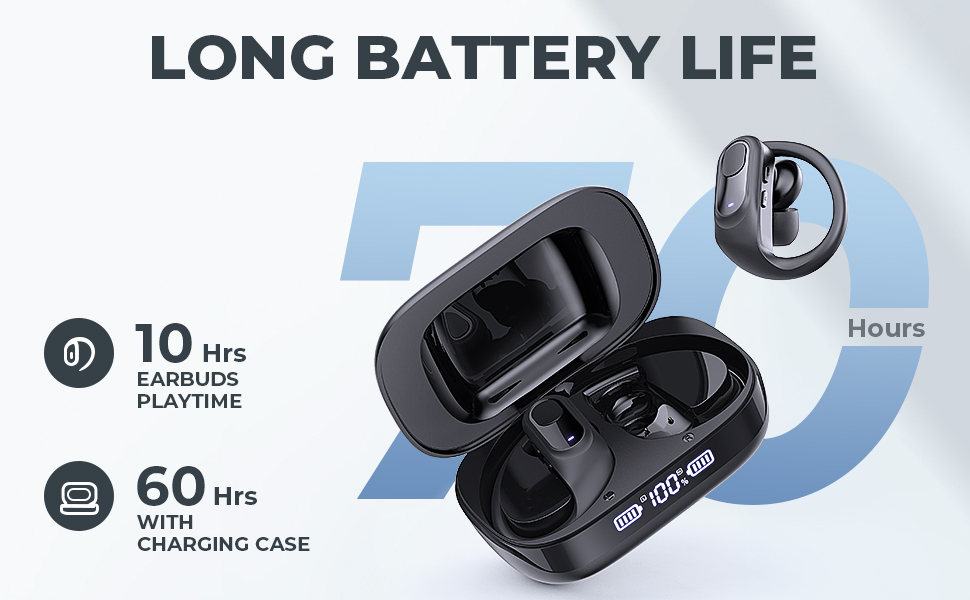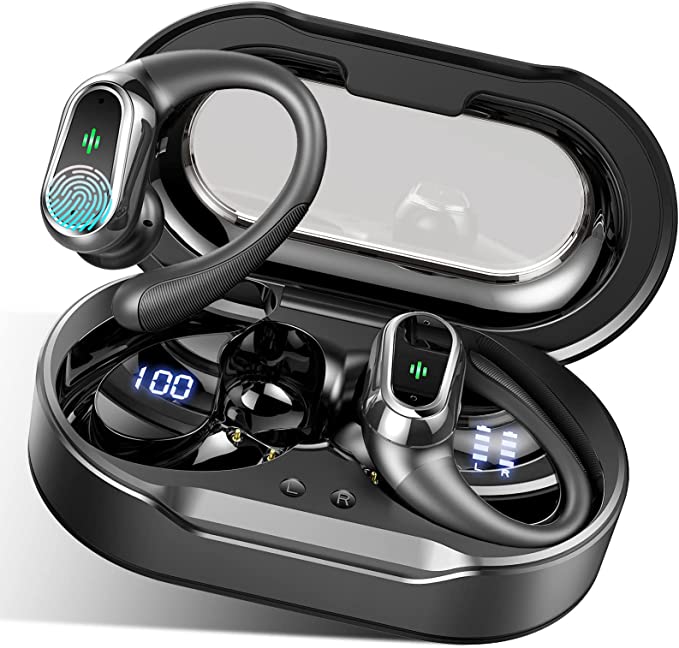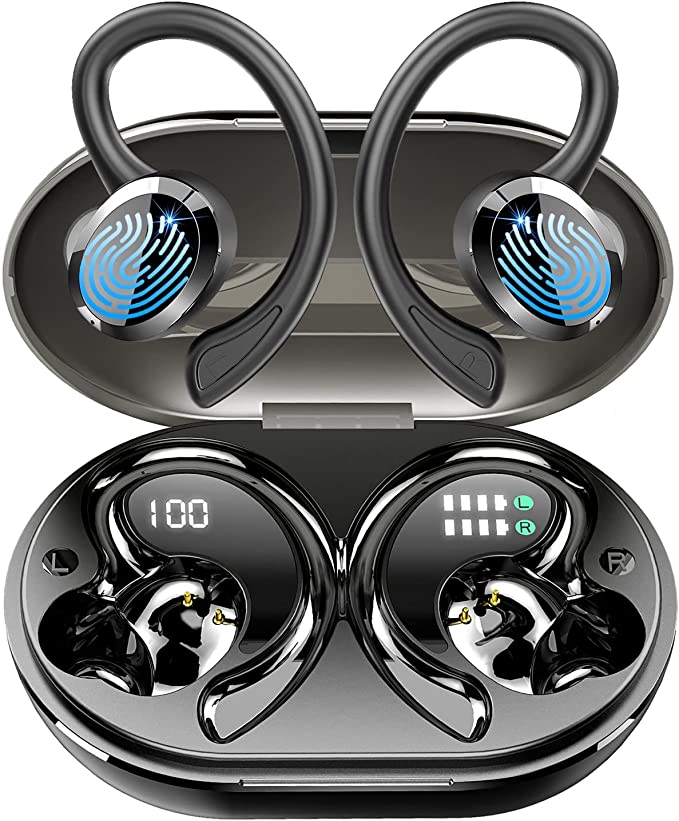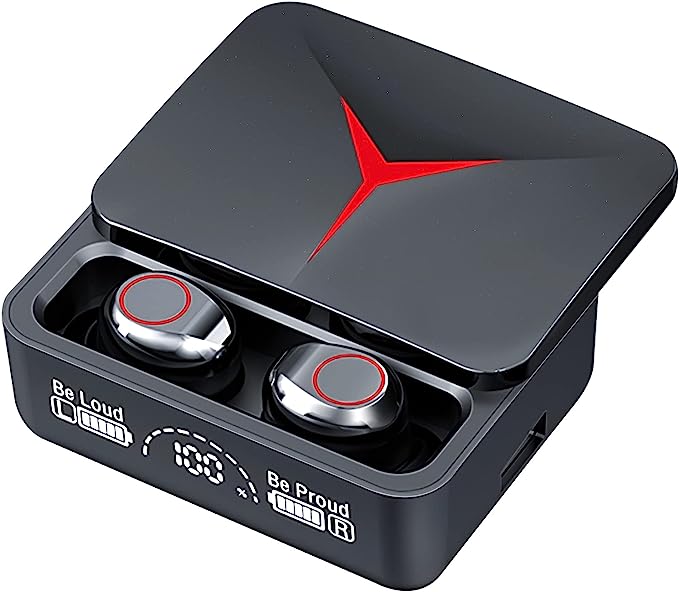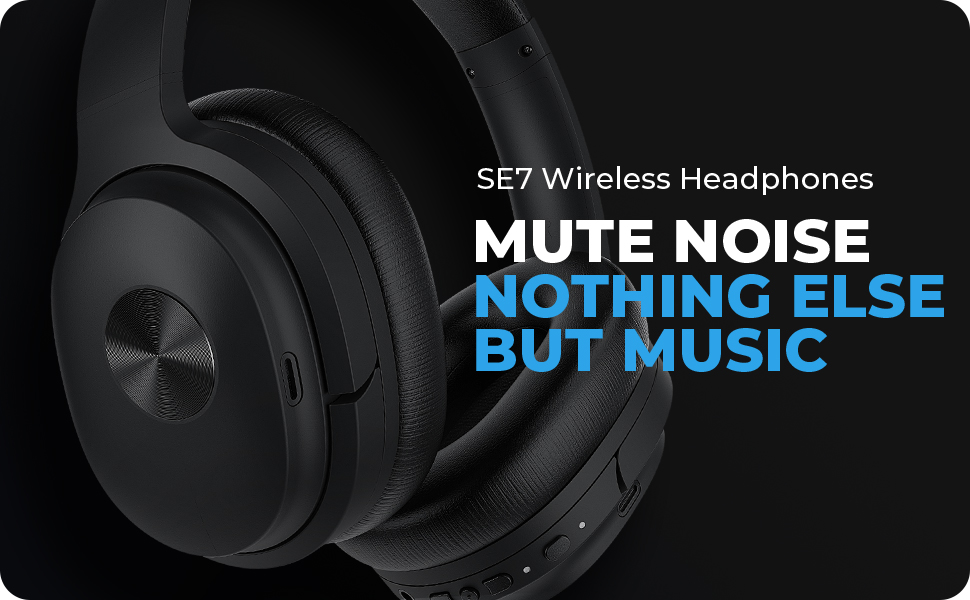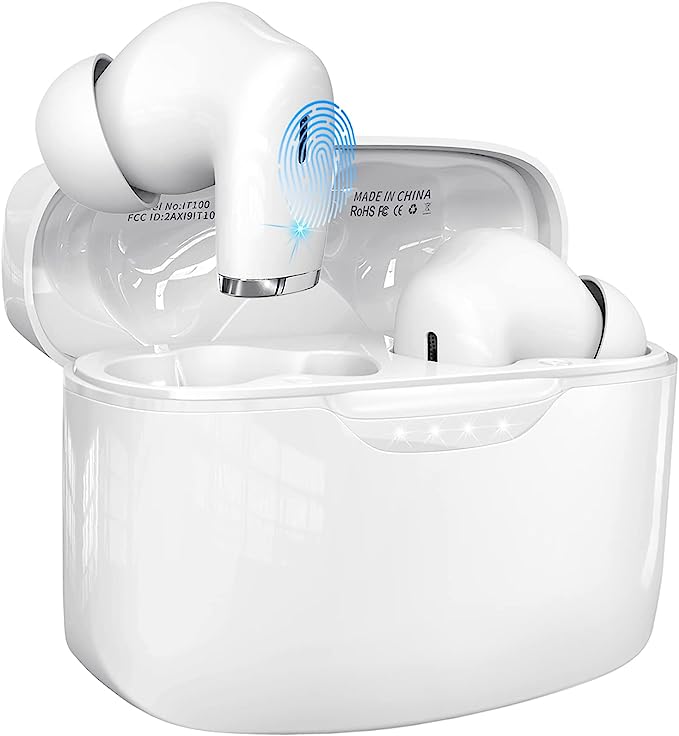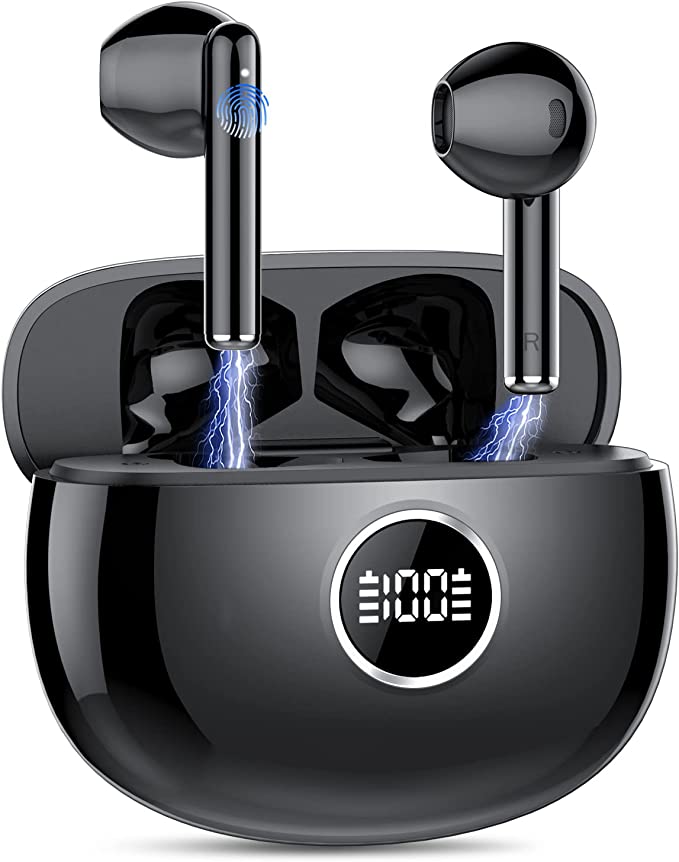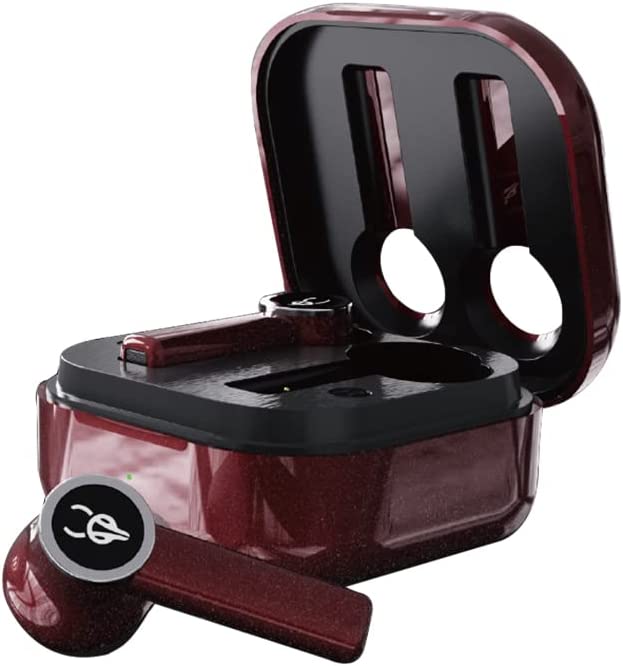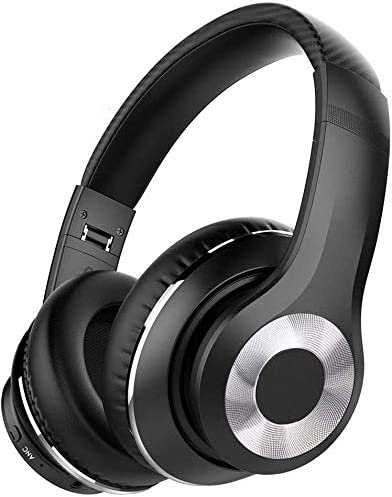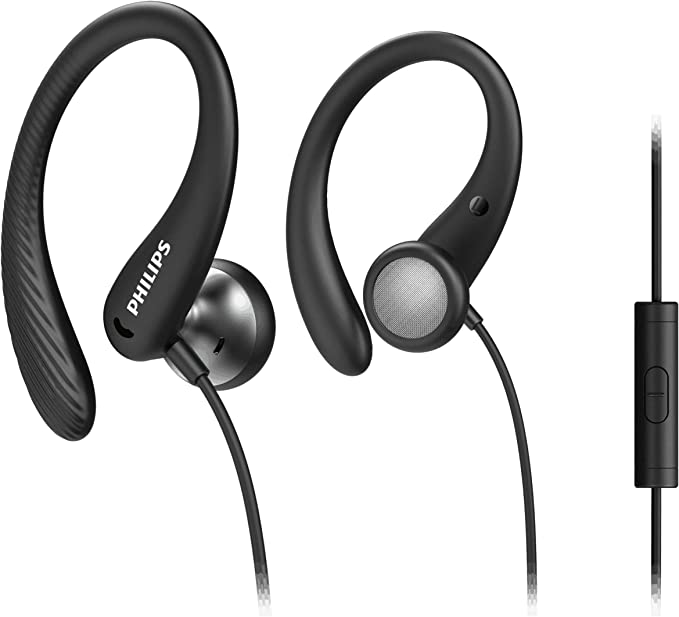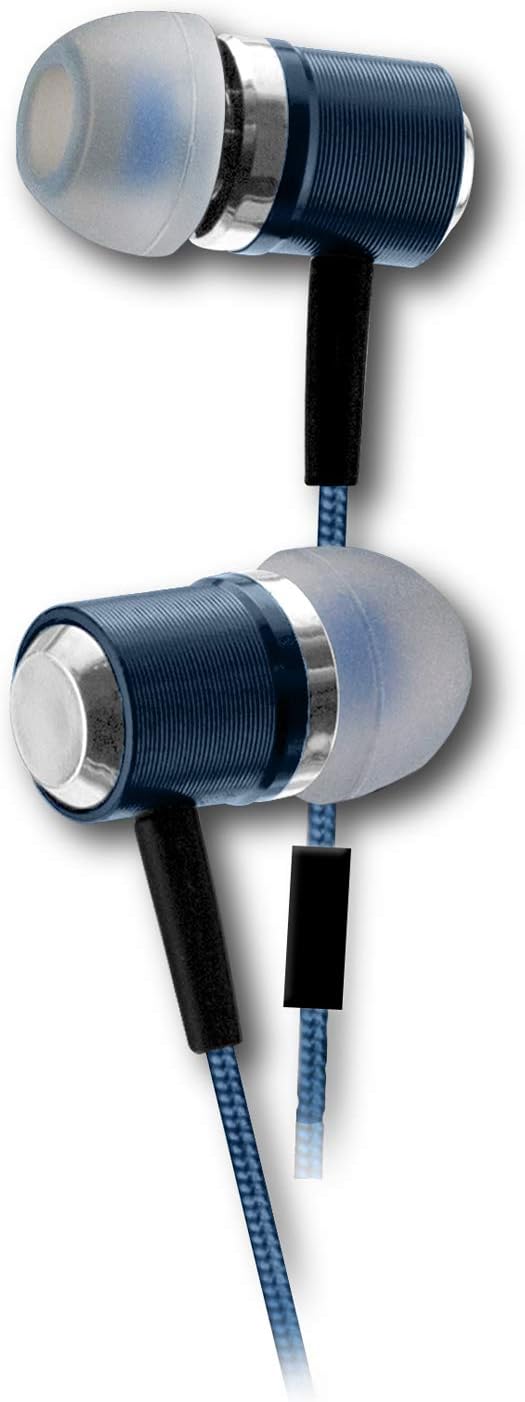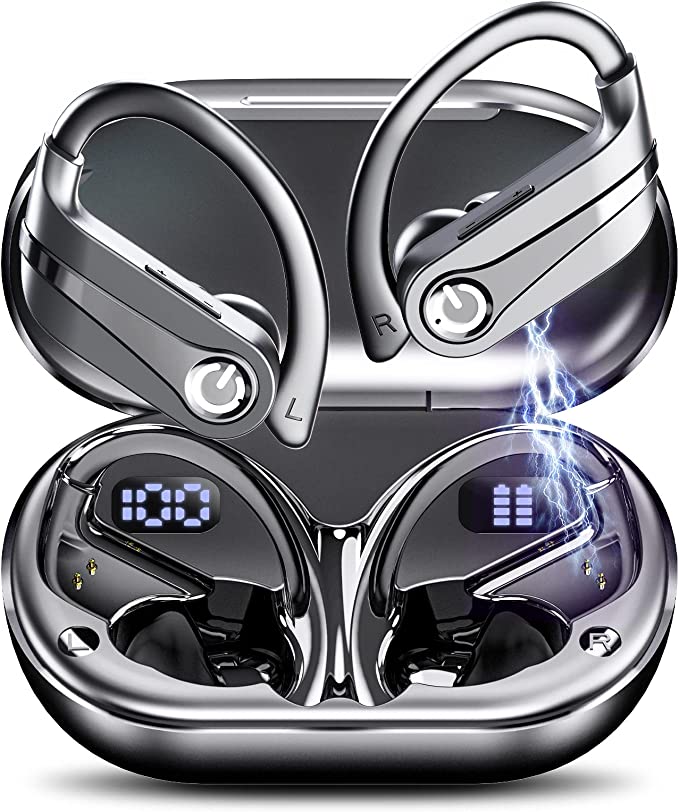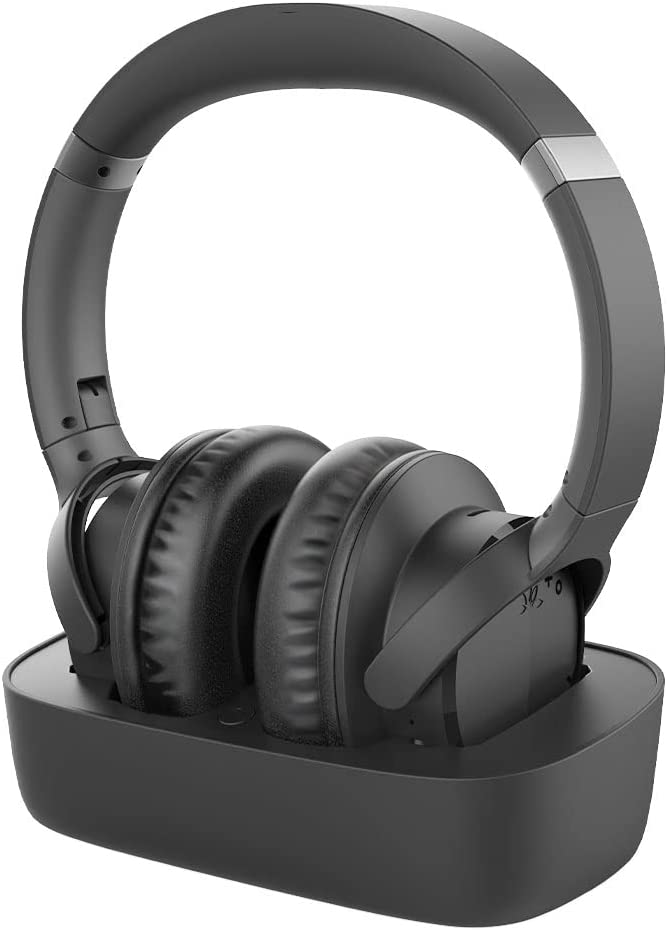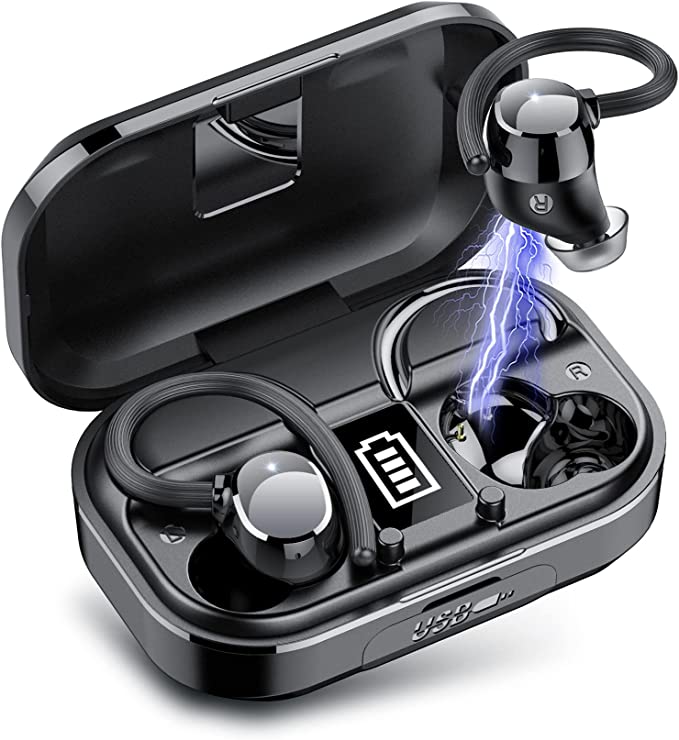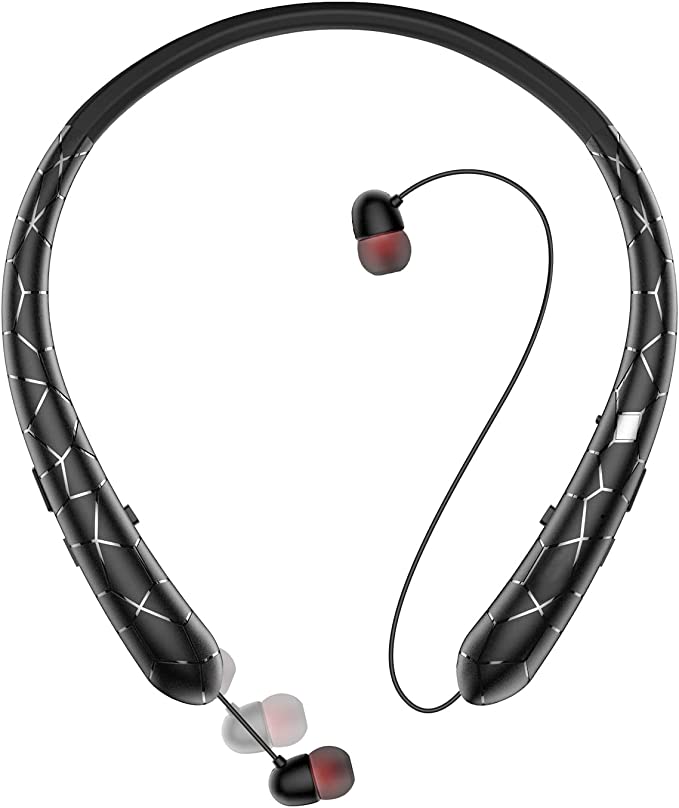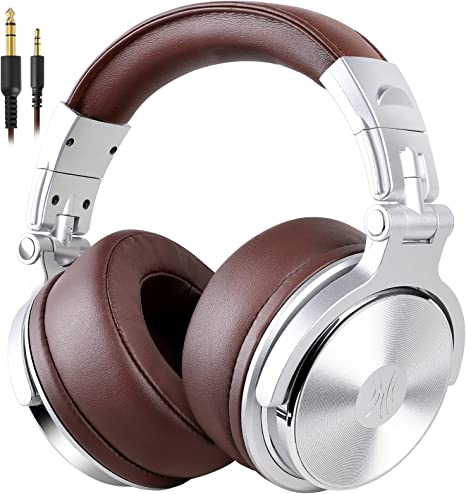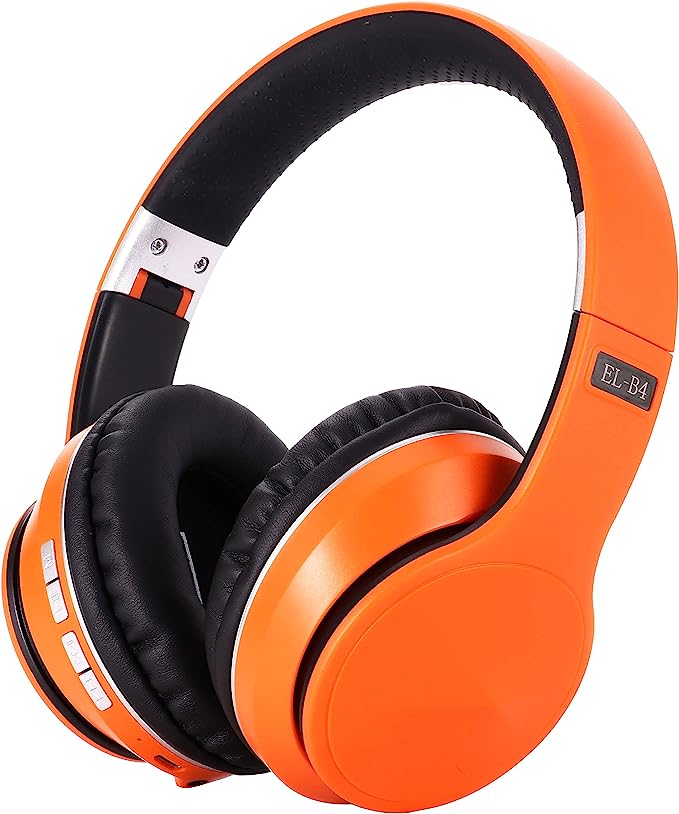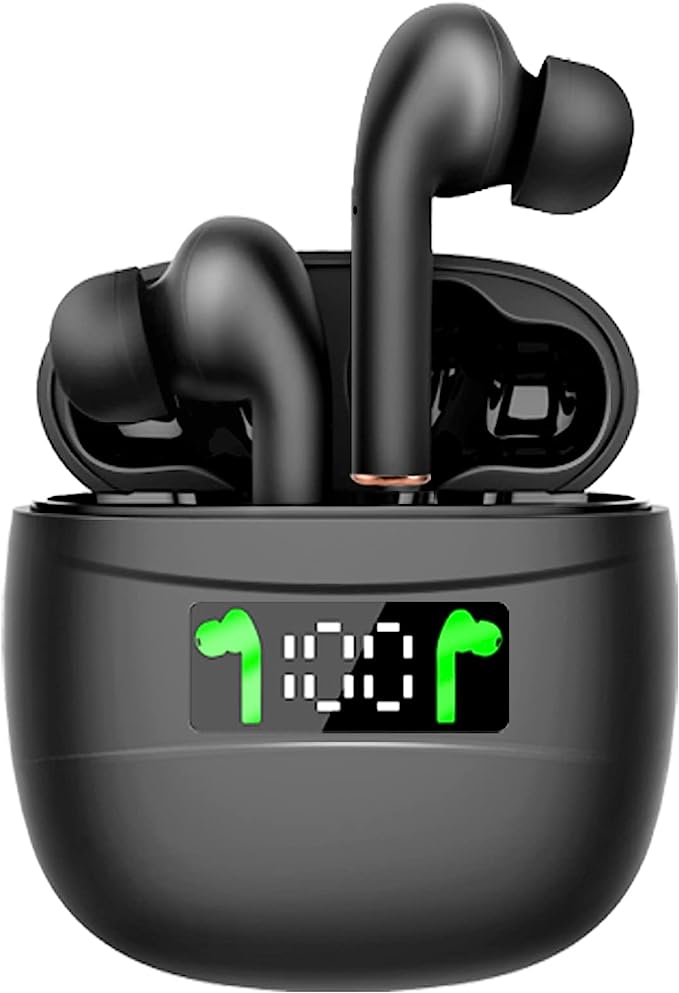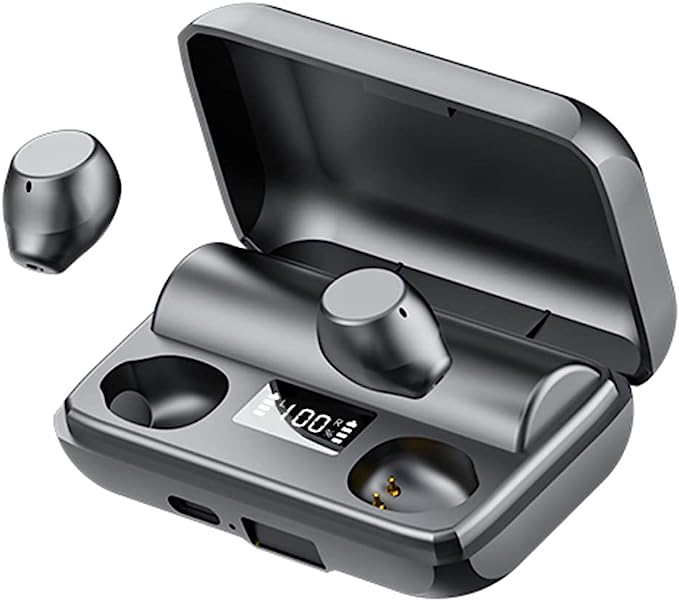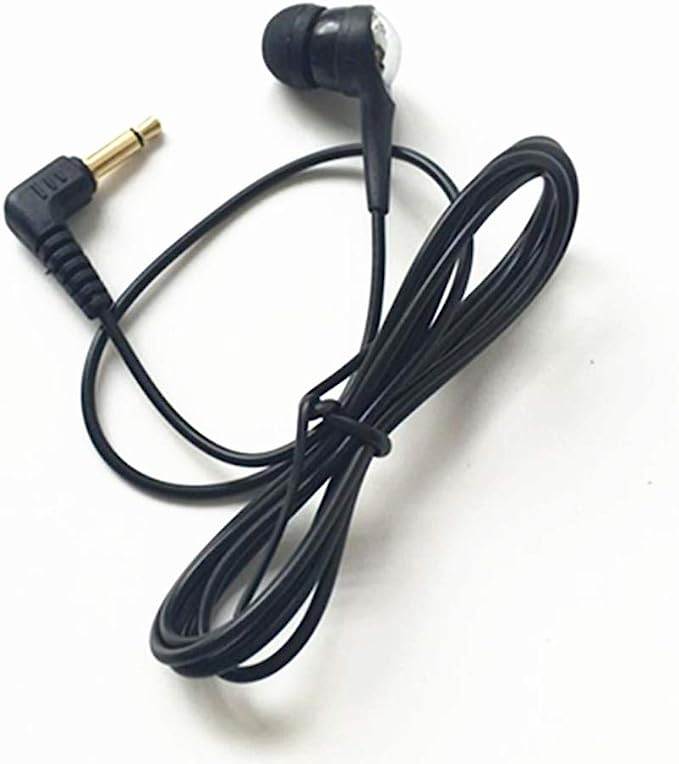Carego Y42 Pro Wireless Earbuds: Unveiling the Science of Immersive Audio, Seamless Connectivity, and All-Day Power
Update on May 30, 2025, 10:50 a.m.
In an age where our lives are increasingly untethered, the quest for personal audio freedom has led us down a fascinating path of technological evolution. Gone are the days of tangled wires الكمcumbering our commutes or workouts. In their place, tiny, sophisticated wireless earbuds have emerged, promising a seamless blend of convenience, portability, and ever-improving sound fidelity. These diminutive devices are not mere gadgets; they are compact concert halls, private communication hubs, and gateways to immersive digital worlds. The Carego Y42 Pro wireless earbuds stand as a compelling example of this modern audio wizardry, packing a symphony of technologies into a pocket-friendly form. Let us embark on an enlightening journey to explore the science, the engineering, and the user-centric design that breathe life into these everyday marvels.

The Invisible Tether: Deconstructing the Magic of Bluetooth 5.3
At the very heart of the wireless earbud experience lies Bluetooth technology, that invisible handshake that bridges your audio source to your ears. The Carego Y42 Pro proudly incorporates Bluetooth 5.3, the latest significant iteration of this ubiquitous wireless standard. To truly appreciate its impact, let’s journey back briefly. Bluetooth technology, romantically named after the 10th-century Danish king Harald “Bluetooth” Gormsson, who was famed for uniting warring Danish tribes, was conceived in the late 1990s by Ericsson. Its mission then, as now, was to replace cables and allow devices to communicate seamlessly over short distances.
So, what advancements does Bluetooth 5.3 bring to your listening experience with the Y42 Pro? It’s not just about a higher number; it’s about tangible improvements:
-
Enhanced Connection Stability and Interference Resistance: Think of older Bluetooth versions as navigating a bustling city street with occasional traffic jams and signal dropouts. Bluetooth 5.3, in contrast, is akin to having a more sophisticated traffic management system with smarter route planning. It introduces features like Periodic Advertising Enhancement and improved channel classification, allowing the earbuds to more intelligently hop between frequencies, dodge interference from other wireless devices (like Wi-Fi routers or microwave ovens), and maintain a more robust, less stutter-prone connection. The Y42 Pro’s “high-sensitivity FPC antenna” further aids in capturing and maintaining this stable signal, ensuring your music or calls flow with fewer interruptions. This is crucial, as user feedback often highlights connection stability as a key factor in TWS earbud satisfaction; a flaky connection can quickly turn a delightful experience ઉત્પાદਨfrustrating.
-
Optimized Power Efficiency: One of the most lauded benefits of Bluetooth 5.3 is its significantly improved power economy. The standard incorporates features like LE Power Control, allowing devices to dynamically optimize transmission power. For the Y42 Pro, this translates directly to longer listening sessions. The product information states, “Power consumption is reduced by 30%,” a claim that, while needing context regarding the baseline comparison, points towards this inherent efficiency. This efficiency is a cornerstone of achieving impressive overall playtime, allowing you to go longer without reaching for the charging case.
-
Potentially Lower Latency and Faster Pairing: Bluetooth 5.3 also lays the groundwork for reduced latency – the slight delay between when audio is sent from your device and when you hear it. While the specific audio codecs used also play a huge role here (more on that later), a more efficient underlying Bluetooth protocol helps. This is particularly noticeable when watching videos or playing games, where a significant lag can be jarring. Furthermore, the Y42 Pro highlights a “Faster-Auto-pair” capability. This capability is enabled by the simplified connection establishment procedures within Bluetooth 5.3, allowing you to access your audio content more quickly after the initial setup.

The Soul of Sound: Unpacking 13mm Drivers and the Pursuit of the “Hi-Fi” Dream
When a pair of earbuds, like the Carego Y42 Pro, claims “Hi-Fi Stereo” sound, it’s aspiring to High Fidelity – the principle of reproducing audio as accurately and faithfully as possible to the original recording, with minimal distortion or coloration. While “Hi-Fi” can sometimes be a subjective marketing term, the physical components within the earbuds play a crucial role in this pursuit. Central to this are the 13mm dynamic drivers.
Let’s demystify what these are and why their size matters:
-
The Magic of Dynamic Drivers: A dynamic driver is essentially a miniature version of the traditional loudspeaker you might find in a home stereo system. It operates on a beautifully simple principle of electromagnetism. It consists of three key parts:
- A diaphragm (or cone): A thin, lightweight membrane that vibrates to create sound waves.
- A voice coil: A coil of fine wire attached to the back of the diaphragm.
- A magnet: A permanent magnet that creates a fixed magnetic field.
When an electrical audio signal (representing your music) flows through the voice coil, it becomes a temporary electromagnet. This electromagnet rapidly interacts with the permanent magnet’s field, causing the voice coil – and the diaphragm attached to it – to move back and forth at incredible speeds. These vibrations push and pull the air, creating the sound waves that travel to your eardrums and are interpreted by your brain as music, podcasts, or a friendly voice.
-
The Significance of 13mm: In the world of earbud drivers, 13mm is a relatively generous size. Why is “bigger” often associated with “better,” especially for certain sound characteristics?
- Bass Response: A larger diaphragm has more surface area, allowing it to move a greater volume of air with each vibration. This is particularly beneficial for reproducing low-frequency sounds (bass). Think of it like the difference between a small hand drum and a large bass drum; the latter can produce deeper, more resonant, and more impactful bass notes. The Y42 Pro’s 13mm drivers are thus engineered to provide a “strong” and full-bodied bass, a quality many listeners appreciate.
- Dynamic Range and Soundstage: Larger drivers can also, in theory, handle a wider dynamic range (the difference between the loudest and quietest sounds) with less distortion. They can also contribute to a more open and spacious soundstage – the perceived width, depth, and height of the musical performance. It’s the difference between feeling the music is narrowly confined inside your head versus feeling like you’re in the room with the musicians.
-
The “Semi-open structure”: The product description mentions the Y42 Pro features a “semi-open structure.” This is an interesting acoustic design choice. Fully closed-back earbuds create a tight seal, which is good for noise isolation and often boosts bass. Fully open-back designs allow air to pass freely, often resulting in a more natural, speaker-like soundstage but with significant sound leakage and poor isolation. A semi-open design, as the name suggests, attempts to strike a balance. It might offer a wider soundstage than a fully sealed design and potentially reduce the “occlusion effect” (that stuffy, head-in-a-barrel feeling some get with tightly sealed in-ears), while still providing some level of passive noise isolation and bass retention. This design choice can contribute to a more comfortable and less fatiguing listening experience for some users.
Achieving true Hi-Fi is a complex art, involving not just the driver but also the earbud’s internal acoustics, the quality of the audio signal, and the tuning performed by the engineers. However, a well-implemented 13mm driver in a considered acoustic structure provides a strong foundation.
Clarity in the Cacophony: The Wisdom of ENC Noise-Cancelling Microphones
In our often-chaotic world, being heard clearly during a phone call can be a daily struggle. Whether you’re navigating a bustling street, working in a lively open-plan office, or battling the wind on your commute, background noise is the nemesis of clear communication. The Carego Y42 Pro addresses this with Environmental Noise Cancellation (ENC) for its microphones.
It’s crucial to understand that ENC, as implemented here, is primarily focused on making your voice clearer to the person on the other end of the call. This is different from Active Noise Cancellation (ANC), which aims to reduce the ambient noise you, the listener, hear from your surroundings.
How does the Y42 Pro’s ENC system work its magic?
-
The Power of Four – “4-highly sensitive mic arrays”: These earbuds don’t rely on a single microphone. Instead, they employ an array of four microphones. This multi-mic setup is key. Some microphones in the array are positioned to best capture your voice, while others are more attuned to picking up the surrounding environmental sounds. Human speech has distinct characteristics and directionality compared to diffuse background noise.
-
The “Precise beam wave algorithm” – Intelligent Filtering: This is where sophisticated Digital Signal Processing (DSP) comes into play. The term “beam wave algorithm” likely refers to beamforming. Imagine your voice as a beam of light you want to focus. Beamforming algorithms use the tiny time and volume differences in sound arriving at each microphone in the array to differentiate your speech from unwanted noise. By intelligently combining the signals from these microphones, the algorithm can create a “listening beam” pointed towards your mouth, effectively amplifying your voice while simultaneously identifying and suppressing sounds coming from other directions – the chatter, the traffic, the wind. This filtered audio, with your voice enhanced and the noise diminished, is what gets transmitted to your caller.
The result? As the product description states, it allows “the other party [to] hear your voice clearly.” This is immensely valuable for “online courses and conferences,” or simply for any call where clarity is paramount. While no ENC system can create perfect silence for your caller, a well-implemented one can make a dramatic difference in intelligibility.

Enduring Energy: Decoding the 60-Hour “Marathon” Battery Life and Smart Charging
One of the most practical concerns for any portable electronic device is battery life. Nobody enjoys “battery anxiety.” The Carego Y42 Pro makes a bold claim: “Up to 60hrs of total listening time in turn.” This impressive figure is a combination of the earbuds’ own stamina and the recharging capability of their case, all underpinned by modern battery and power management technology.
Let’s break down how this endurance is achieved:
-
The Power Within – Lithium-Ion Cells: Like virtually all modern portable electronics, the Y42 Pro earbuds and their charging case rely on Lithium-ion (Li-ion) or Lithium-ion Polymer (Li-Po) batteries. These batteries offer a high energy density (meaning they can store a lot of energy in a small, lightweight package), a relatively low self-discharge rate, and can be recharged hundreds of times. The earbuds themselves are designed for power efficiency, with each one capable of providing approximately “5hrs on one charge.” This is made possible by the power-saving nature of Bluetooth 5.3 and the optimization of internal components.
-
The Case as a Mobile Power Bank: The charging case is more than just a convenient storage box; it’s a portable power bank specifically for the earbuds. The Y42 Pro’s case “can provide extra 5 times the full charge for earbuds.” This is where the “60hrs of total listening time in turn” figure primarily derives its meaning. It implies that if you use one earbud until it’s depleted, then switch to the other fully charged one while the first recharges in the case, and continue this rotation, you can achieve a very extended overall listening period. Or, more commonly, after using both earbuds for their 5-hour stint, placing them back in the case will recharge them multiple times. The Amazon product information mentions “230 Milliampere Hour (mAh)” under “Charging Time” in the product details, which, given the unit, likely refers to the battery capacity of the charging case or perhaps each earbud, rather than the time it takes to charge. A typical earbud battery might be 40-60mAh, so 230mAh would be a reasonable capacity for the charging case, enabling those multiple recharges.
-
Swift Rejuvenation – Type-C Fast Charging: When the charging case itself runs low, the convenience of “1.5Hrs fast charging by type-c” is a significant boon. USB Type-C is the modern, reversible connector standard that allows for faster charging speeds and data transfer compared to older USB types. Being able to quickly top up the case means less downtime.
-
The “Know Your Power” Advantage – Dual LED Digital Display: Uncertainty about remaining battery life can be frustrating. The Y42 Pro’s charging case features a “Dual LED battery display” that shows “the remaining juice of charging case by the number.” This clear, numerical indication of the case’s battery percentage, and often a visual representation of each earbud’s charging status, empowers users to manage their power proactively and “master the best time to charge.”
The Art and Science of Wearing: Comfort, Lightness, and IPX5 Armor
Beyond the internal electronics, the physical design of earbuds profoundly impacts the user experience. After all, these are devices worn in or on our ears, often for extended periods. The Carego Y42 Pro emphasizes “Comfortable Wearing” and protective features.
-
The Featherlight Touch – 3.8g and Ergonomics: Each Y42 Pro earbud weighs a mere “3.8g,” making them “ultra-light.” This minimal weight is crucial for long-term comfort, as heavier earbuds can cause ear fatigue or a feeling of pressure. Beyond just weight, ergonomic design plays a vital role. This involves shaping the earbud housing to conform to the natural contours of the human ear (specifically the concha and ear canal entrance). A good ergonomic design aims for a secure fit that doesn’t easily fall out during movement, while also distributing pressure evenly to avoid discomfort. The product also includes S/M/L EarPads (eartips). Selecting the correct eartip size is paramount not only for comfort and stability but also for achieving optimal sound quality, particularly bass response, as a good seal is necessary. Some user feedback, like Dorothy Conger’s review (“I struggled a bit to get these earbuds to sit in my ear comfortably without falling out. They seem a bit on the big side even with the smallest pad.”), highlights that ear shape is highly individual, and even with multiple eartip sizes, a perfect fit for everyone can be elusive. This underscores the challenge and importance of ergonomic considerations in earbud design.
-
Ready for Real Life – IPX5 Waterproofing: Life is unpredictable. A sudden rain shower during your run or an intense, sweaty gym session shouldn’t spell disaster for your earbuds. The Y42 Pro features an IPX5 waterproof rating. Let’s decode this:
- The “IP” stands for Ingress Protection.
- The first digit (represented by “X” here) indicates protection against solid particles (like dust). An “X” means it hasn’t been specifically rated for dust ingress under this standard.
- The second digit, “5” in this case, indicates protection against water ingress. An IPX5 rating specifically means the earbuds are protected against low-pressure water jets projected by a nozzle (6.3mm) from any direction for at least 3 minutes.
In practical terms, this makes the Y42 Pro “drip-proof” and resilient against “rain suddenly or sweats violently.” It’s “Applicable to all weather types” where such exposure is likely, making them suitable for “jogging, running, yoga, sports, gym and cycling.” However, it’s important to note that IPX5 does not mean they are fully waterproof for submersion, like swimming.

Magic at Your Fingertips: The Secrets of Touch Control
In the pursuit of sleek, minimalist design and seamless interaction, many modern wireless earbuds, including the Carego Y42 Pro, have eschewed physical buttons in favor of touch controls. This allows users to manage playback, calls, volume, and other features with simple taps or presses on the earbuds’ outer surface.
How does this seemingly magical interaction work? It’s typically based on capacitive sensing technology:
- The surface of the earbud designated for touch control has an electrode that maintains a very small, stable electrical charge, creating an electrostatic field.
- Your fingertip, being electrically conductive, disrupts this field when it comes into close proximity or direct contact.
- Sensitive circuitry within the earbud detects this minute change in capacitance (the ability to store an electrical charge).
- A microcontroller then interprets this detected change as a specific gesture (a single tap, double tap, long press, etc.) and translates it into a command for the connected device (e.g., play/pause music, answer call, activate voice assistant).
The Y42 Pro offers a comprehensive suite of touch commands:
- Voice Assistant: A 2-second press activates your phone’s native assistant (Siri or Google Assistant).
- Volume Control: Double-tap the left earbud to decrease volume, and the right to increase.
- Track Navigation: Triple-tap the left for the previous track, and the right for the next.
- Mode Switching: Five taps can toggle between “game or music mode.” Game mode often prioritizes lower audio latency, which is critical for synchronized audio and visuals in gaming.
- Call Management: Double-tap either earbud to answer or end a call; a 2-second press rejects an incoming call.
These intuitive controls enhance convenience, allowing users to keep their phones informacji pocketed while managing their audio world.

Harmony of Technology: Beyond the Earbud – A Concluding Thought
The Carego Y42 Pro wireless earbuds, like many of their contemporaries, are more than just a sum of their parts. They represent a carefully orchestrated harmony of advancements in wireless communication, acoustic engineering, battery technology, material science, and human-computer interaction. From the stable and efficient embrace of Bluetooth 5.3, to the rich soundscapes potentially unlocked by 13mm drivers, the call clarity afforded by sophisticated ENC, the marathon-like endurance of their power system, and the intuitive grace of touch controls – each feature is a testament to the relentless pursuit of a better, more seamless, and more immersive personal audio experience.
While no single product can be all things to all people, and individual experiences with fit or specific environmental factors can vary, the underlying technologies discussed here are fundamentally shaping how we connect with our digital lives. Understanding the science and engineering packed into these tiny devices not only demystifies them but also allows us to appreciate the incredible ingenuity that makes our untethered, high-quality audio experiences possible. As technology continues its rapid march, the future of personal audio promises even more intelligence, greater immersion, and an ever-deeper connection to the sounds that enrich our world.


